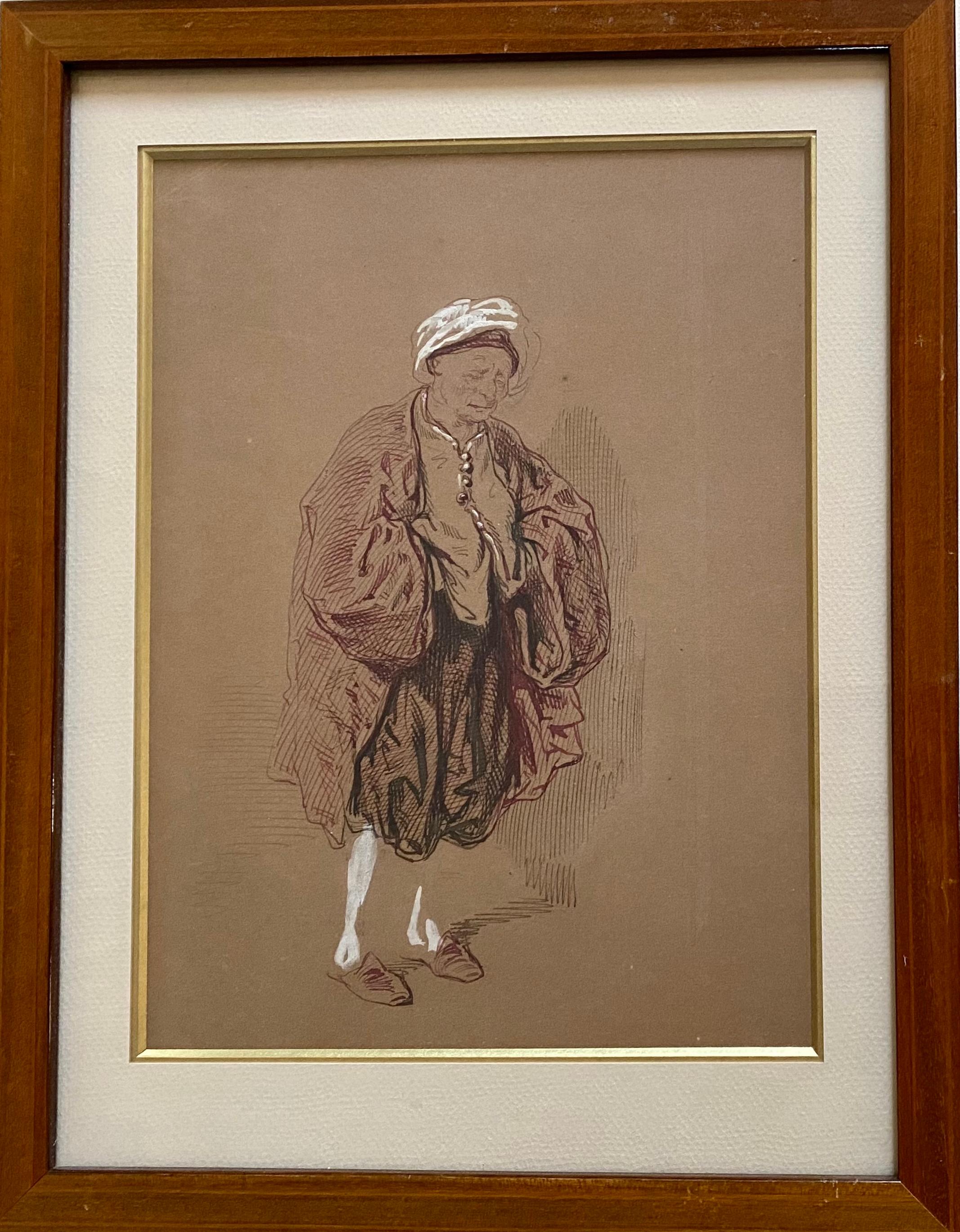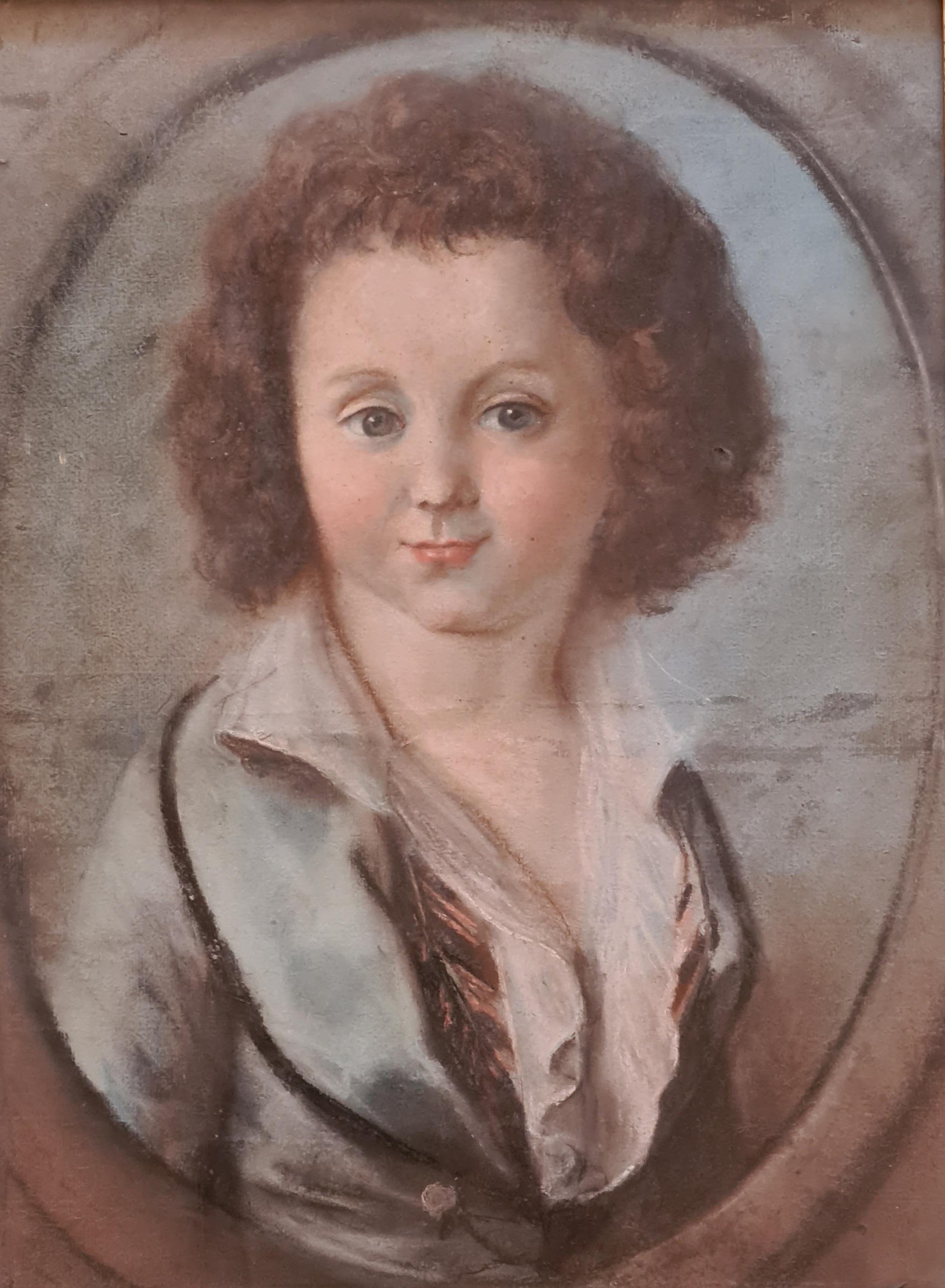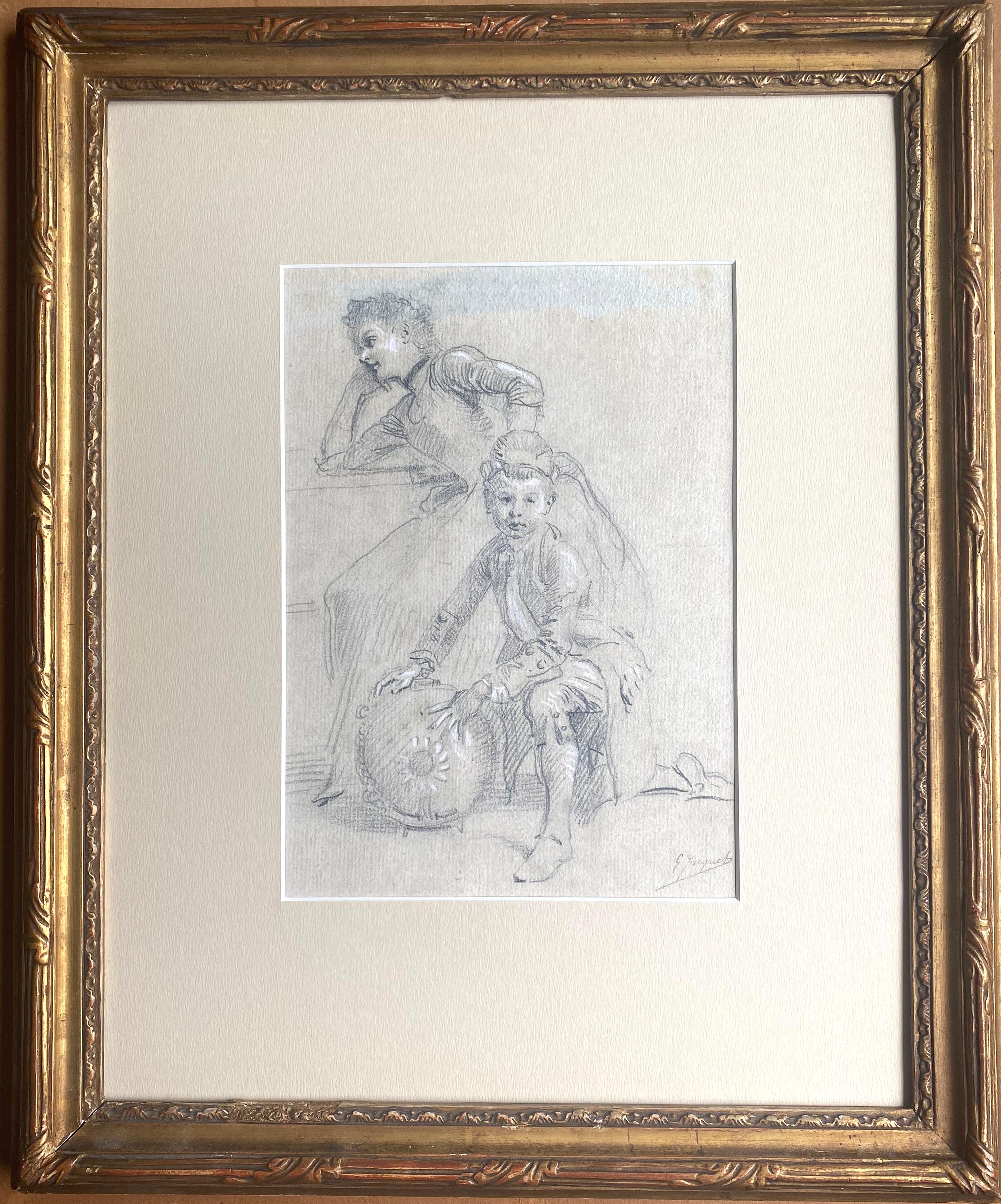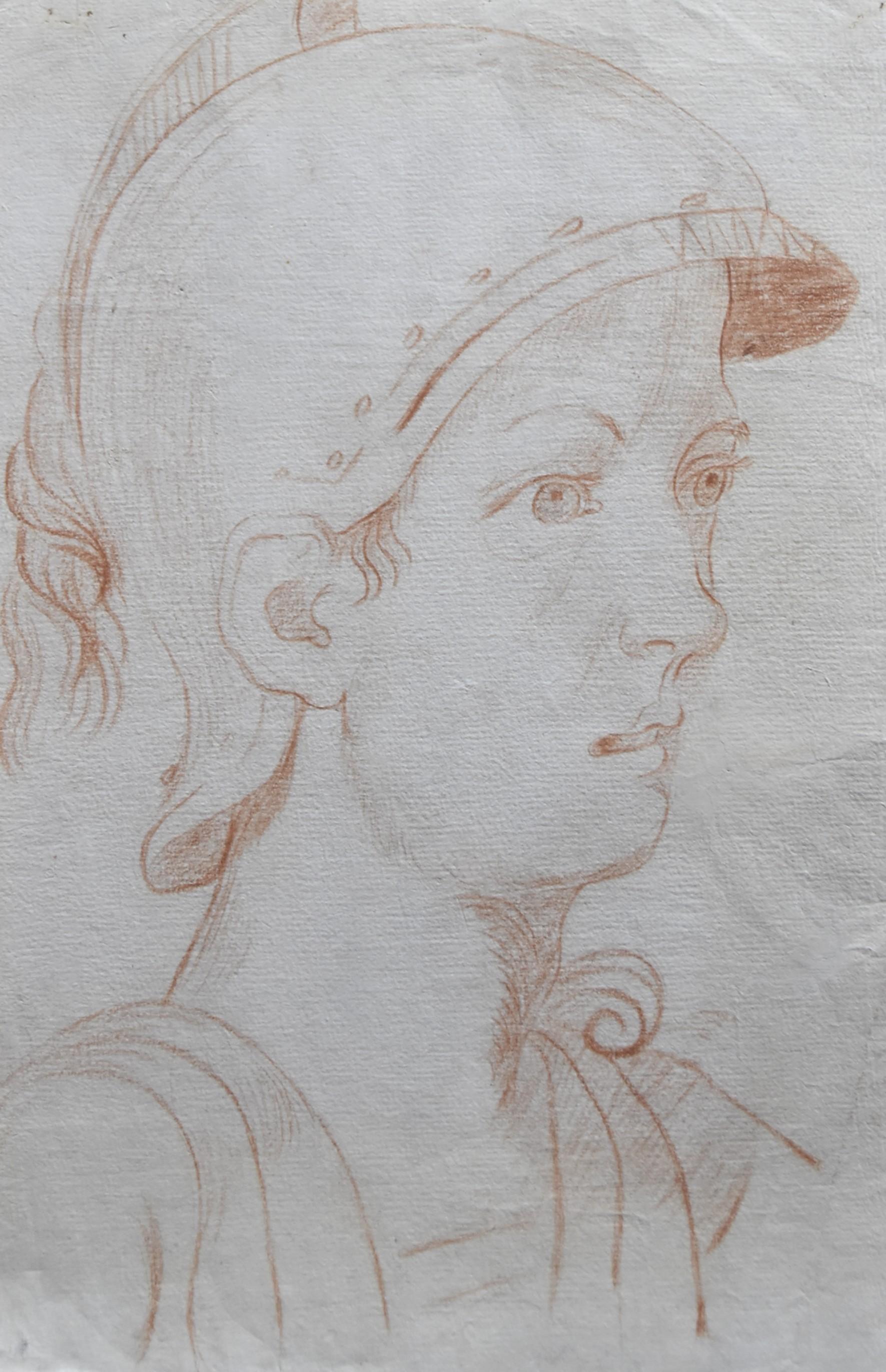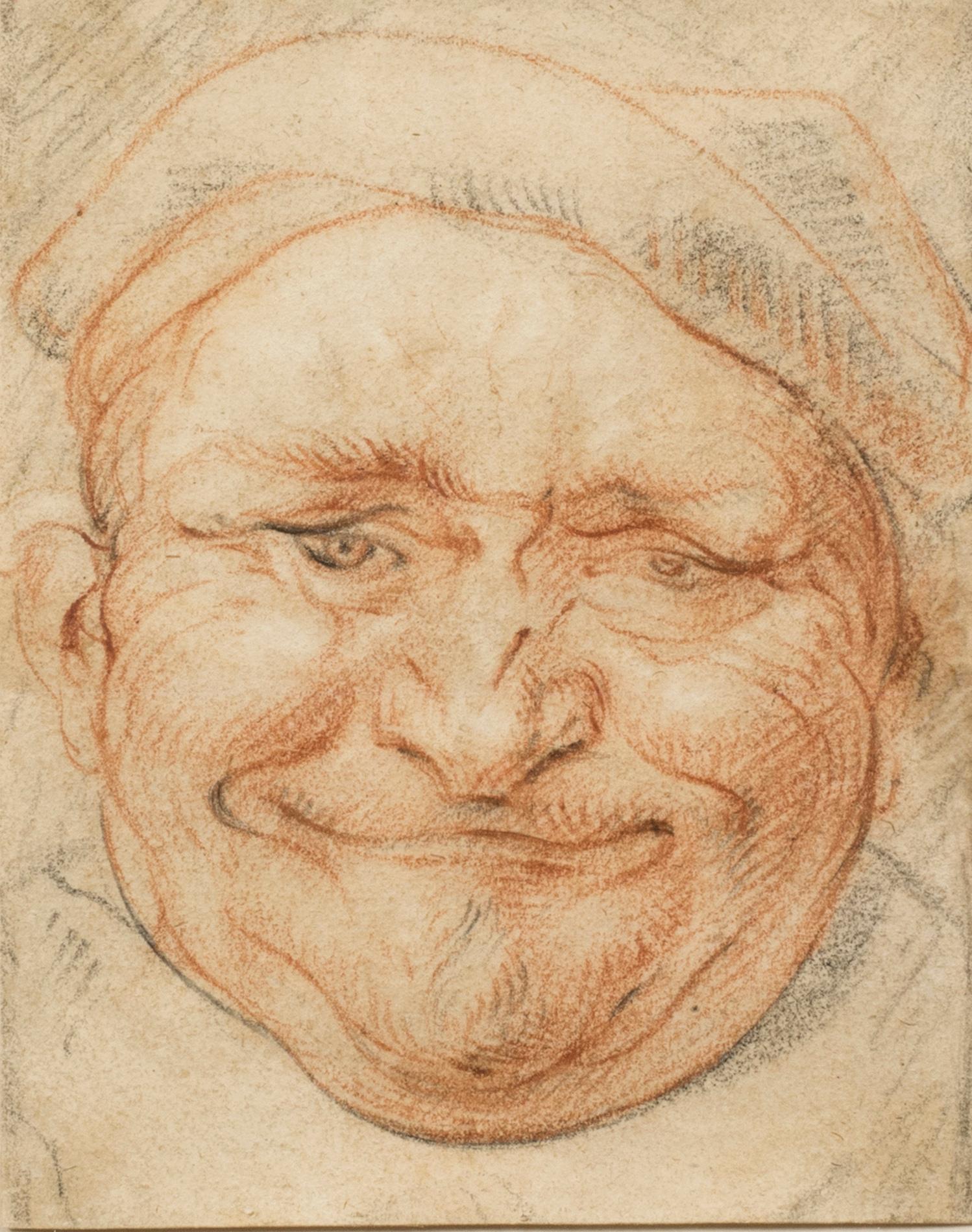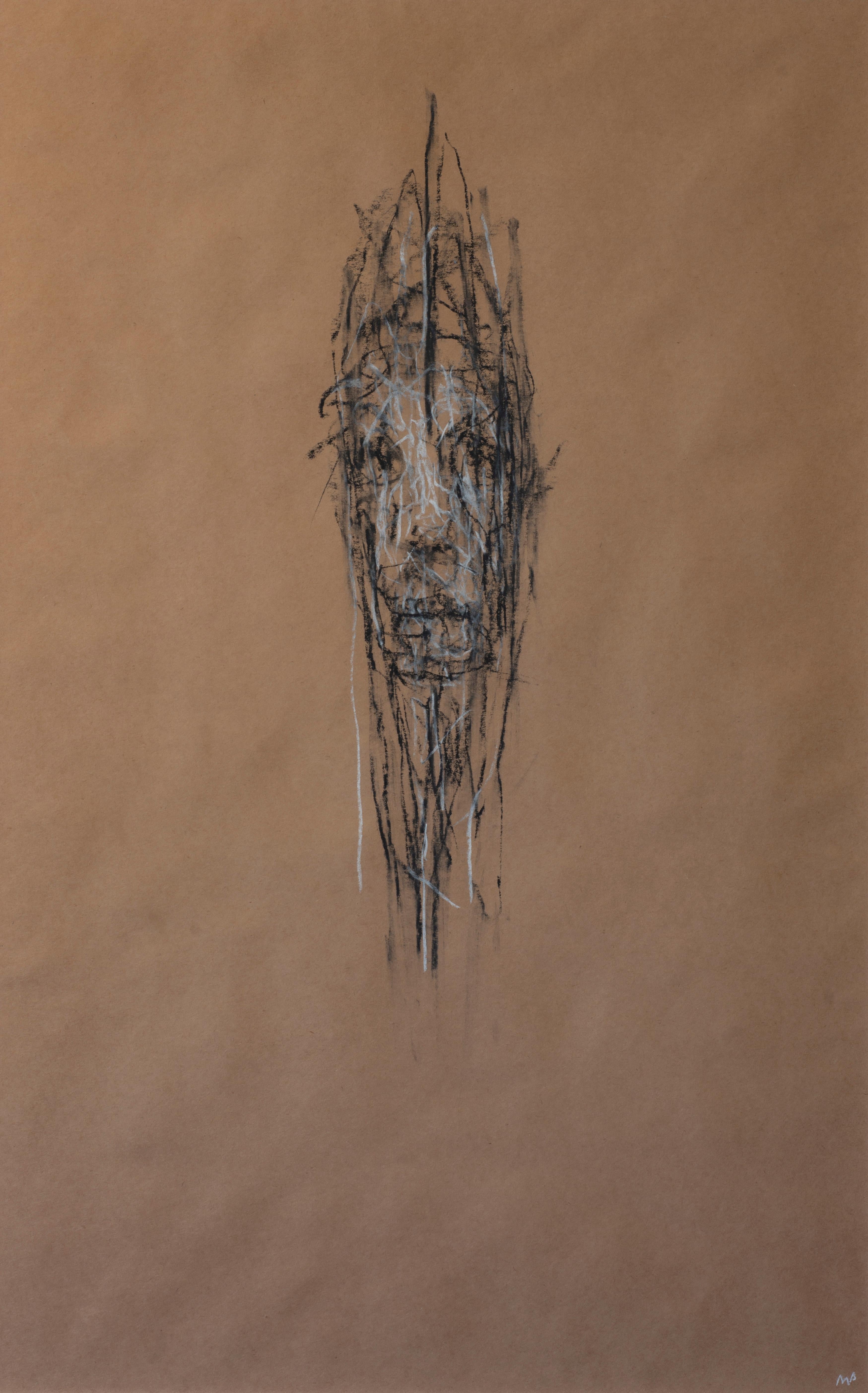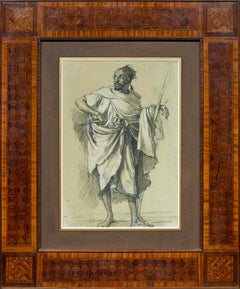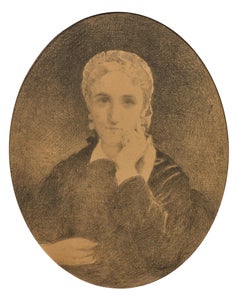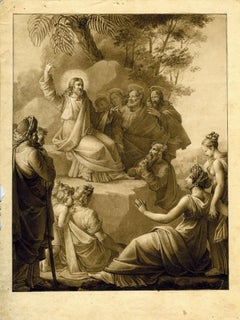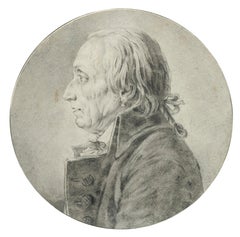
Portrait of an Revolutionary - Drawing from the School of Jacques-Louis David
View Similar Items
Want more images or videos?
Request additional images or videos from the seller
1 of 5
Portrait of an Revolutionary - Drawing from the School of Jacques-Louis DavidCirca 1795
Circa 1795
About the Item
- Creation Year:Circa 1795
- Dimensions:Height: 4.34 in (11 cm)Diameter: 4.34 in (11 cm)
- Medium:
- Movement & Style:
- Circle Of:Jacques-Louis David (1748 - 1825, French)
- Period:1790-1799
- Condition:Black chalk and stump drawing 11 cm diameter (26 x 24 cm framed) Provenance: private collection in Paris.
- Gallery Location:PARIS, FR
- Reference Number:1stDibs: LU156828245462
About the Seller
5.0
Vetted Seller
These experienced sellers undergo a comprehensive evaluation by our team of in-house experts.
Established in 2020
1stDibs seller since 2021
8 sales on 1stDibs
Typical response time: 2 hours
More From This SellerView All
- The Arab Butcher, a preparatory drawing by Gustave Guillaumet (1840 - 1887)Located in PARIS, FRThis intensely expressive figure is a preparatory study for "Arab Market on the Tocria Plain", a painting exhibited at the 1865 Salon and now in the Musée des Beaux-Arts in Lille. 1...Category
1860s Old Masters Figurative Drawings and Watercolors
MaterialsChalk, Carbon Pencil
- Portrait of a Lady, Drawing Signed and Dated by Augustin de Saint-AubinBy Augustin de Saint-AubinLocated in PARIS, FRThis drawing full of freshness presents us with the profile of an elegant lady, drawn by Augustin de Saint-Aubin on a beautiful summer day in 1776, during the early months of Louis X...Category
1770s Old Masters Portrait Drawings and Watercolors
MaterialsPastel, Pencil
- Portrait of a Melancholic Woman, a Drawing signed by Léon BonnatLocated in PARIS, FRThis drawing by Léon Bonnat, the greatest portrait painter of the Third Republic, shows a woman of indeterminate age, caught in a melancholic pose. 1. Léo...Category
Late 19th Century Romantic Portrait Drawings and Watercolors
MaterialsCarbon Pencil, Cardboard
- Costume of an envoy of Venice, a drawing by Francesco Galimberti (1755 - 1803)Located in PARIS, FRWe thank Mrs. Bożena Anna Kowalczyk who suggested the attribution to Francesco Galimberti based on a photograph of the artwork. This engaging drawing, finely executed in black and red chalks, depicts a Venetian diplomat in his 'new clothes...Category
1780s Old Masters Portrait Drawings and Watercolors
MaterialsChalk
- Portrait of a Newlywed by Casper Casteleyn, an artist of the Dutch Golden AgeLocated in PARIS, FRThis marvelous portrait on vellum is the work of a rare Dutch Golden Age artist, Casper Casteleyn, who has also drawn a closely related portrait now at the Fondation Custodia in Pari...Category
17th Century Old Masters Portrait Drawings and Watercolors
MaterialsChalk, Vellum
- Christ before Herod, a drawing from the School of TitianLocated in PARIS, FRThis vigorous drawing is clearly inspired by the numerous compositions on the Ecce Homo theme which were produced by Titian and his workshop at the painter's maturity. However, the number of characters and their expressionist treatment, the many variations to Titian's paintings reveal a drawing made by an original artist, perhaps of foreign origin, belonging to the peripheral circle of the "Titian solar system”, as described by the art historian Enrico Maria del Pozzolo. 1. Titian, the leading artist of 16th century Venetian painting and his botteghe Tiziano Vecelli (or Vecellio), known as Titian, was born between 1489 and 1490 in Pieve di Cadore in the Veneto region of Italy into a wealthy family of soldiers and lawyers. At the age of 15, he joined the studio of Giovanni Bellini, where he became friend with Giorgione, ten years his senior. Giorgione introduced him to a new pictorial style in which forms are defined by colour and pictorial substance, freeing himself from the meticulous underlying drawings characteristic of Bellini's painting. Titian became the official painter of the Republic of Venice upon Bellini's death in 1516. In 1518, the completion of his Assumption for the church of Santa Maria Gloriosa dei Frari in Venice established his reputation as the leading painter of the Venetian school: throughout his career, Titian had a considerable impact on other artists of his time, whether they were direct collaborators, occasional contributors, or other artists under his influence. Considered one of the greatest portraitists of his time, his fame spread throughout Europe and he became the official painter of the greatest European families: the Gonzagas, the Farneses (Alessandro Farnese, of whom he executed several portraits, was elected pope in 1534 under the name of Paul III), the Habsburgs (he went to Augsburg in 1548 to paint the portrait of Charles V and King Philip II of Spain, his successor, later became the artist's main patron). As Titian almost reached the age of 90 years, he saw during his lifetime the death of many of his loved ones (his wife Cecilia, his brother Francesco and his son Orazio). A pathetic feeling appears in his late artworks, such as his famous Pieta, his last work intended to decorate his tomb which remained unfinished. Titian's success was also based on the establishment of a large and versatile workshop, which, alongside the traditional assistance in the production of certain paintings, ensured the publication of numerous woodcuts, allowing the master's works to be widely distributed. Long ignored by art historians, the individual stories of these various collaborators, the organisation of this workshop and the interactions of the collaborators with the master are at the heart of contemporary studies on the artist. 2. A complex composition with expressionist overtones Executed with great virtuosity in black chalk, the composition of our drawing is complex, even slightly confused and probably reflects several phases of execution, if not several hands. The scene is organised around the characters of Christ and an executioner wearing a Phrygian cap. Christ is presented at mid-body, slightly at an angle, his torso bare, his shoulders draped in a cloak, his hands clasped together and probably bound. His head, as if weighed down by the crown of thorns, is slightly bent forward. The eyes and mouth are hollowed out by the black chalk to better express his sorrow. The man wearing a Phrygian cap holds a whip in his right hand, while his left hand, barely outlined, seems to be pulling aside Christ's tunic as if he were about to scourge him. Two other men, who may have been added at a later stage, occupy the space between the executioner and Christ. One is depicted in profile, while the one behind Christ appears to be wearing a military helmet. In an indistinct gesture, his left arm is raised as if to strike Christ. Slightly behind Jesus on his left side, appears a bearded old man wearing a turban. With his left arm raised, he holds out the palm of his hand in a gesture of amazement. His face is finely executed and contrasts with the hand depicted in a rather crude manner. This character may also have been added at a later stage, as he does not fit in perfectly behind the group formed by Jesus and his executioner. This frieze is completed in the left foreground by two additional figures depicted in three-quarter view. Soberly sketched but with great fluidity, only their heads emerge, as if Christ and his executioners were situated on a pedestal above a large crowd. Finally, on the right-hand side of the composition, a second helmeted soldier is depicted. His musculature can be seen under his armour while he stares intently at Christ. He is smaller than the other figures, even though he appears in the front row, revealing a certain clumsiness on the part of the artist. 3. Ecce Homo, one of Titian’s favourite subjects in his twilight years In 1543, Titian tackled the theme of the Ecce Homo in a masterly composition now in the Kunsthistorisches Museum in Vienna. Christ is presented by Pilate, dressed in an antique costume, at the top of a staircase, in a large, highly architectural setting animated by a crowd of characters. The title of the painting refers to a passage from the Gospel of St John (19, 1-5): “Then Pilate took Jesus and had him flogged. The soldiers twisted together a crown of thorns and put it on his head. They clothed him in a purple robe and went up to him again and again, saying, “Hail, king of the Jews!” And they slapped him in the face. Once more Pilate came out and said to the Jews gathered there, “Look, I am bringing him out to you to let you know that I find no basis for a charge against him.” When Jesus came out wearing the crown of thorns and the purple robe, Pilate said to them, “Here is the man!” From the 1540s onwards, Titian and his workshop repeatedly depicted the Christ of Sorrows for their principal patrons. In these paintings, Titian returned to the half-body format that he had practically abandoned since 1520 and refocused the composition (compared to the large 1543 Ecce Homo) on the figure of Christ, who is depicted alone or accompanied by a few figures. With his eyes lowered and his head slightly bowed, Titian's Christ seems calmly resigned to his fate. Powerless and submissive, he arouses deep pathos from the viewer. The tondo in the Louvre Museum shows Christ in a position very similar to that of our drawing, a position that will be found in most of Titian's Ecce Homo. To his right stands a helmeted soldier who seems to be baring his shoulder and to his left a servant of Pilate wearing a Phrygian cap. These two figures are reminiscent of the soldier in the lower right corner and the executioner in the left most part of our drawing. Various versions were executed by Titian and his workshop until the late 1560s, and the version that seems closest to the right-hand side of our drawing is the one in the Prado Museum. Although of uneven quality, it is interesting to note the gesture of Pilate's hand, holding out the palm of his left hand towards the viewer, as if to distance himself from the decision that the crowd will make. Recent X-rays of the painting have shown that the executioner on the right, depicted from behind, was originally depicted in profile (as in our drawing), and that the other two figures (Pilate on the left of Christ and a servant wearing a Phrygian cap on his right) were added later. The painting was then organised around the diagonal that crosses the canvas from left to right, emphasised by the light coming from the window, and centred on the exchange of glances between Christ and the executioner on his left. The profile of the old man in the foreground on the left could be inspired by that of the elderly Titian as it appears repeatedly in the painter's late artworks, such as the Madonna of Mercy in the Palatine Gallery. 4. A deeply original drawing, at the risk of confusion We saw in the last paragraph the various borrowings from Titian's depictions of the Ecce Homo that can be found in this drawing: the position of Christ, the presence of executioners wearing Phrygian caps and of helmeted soldiers, one of whom is looking at Christ in a position that evokes the repentance visible with X-ray in the Madrid painting...Category
16th Century Old Masters Figurative Drawings and Watercolors
MaterialsChalk
You May Also Like
- Young elegant woman in a hatBy Edgar ChahineLocated in Genève, GEWork on paper Brown wooden frame with glass pane 92 x 73 x 5 cmCategory
Early 20th Century French School Portrait Drawings and Watercolors
MaterialsChalk, Pastel
- The Sermon on the Mount – French School, 19th centuryLocated in Middletown, NYPen and ink with wash on watermarked J Whatman 1814 paper, 11 x 8 1/4 (280 x 210 mm). Scattered minor edge losses at the left sheet edge, well outside of image area. Minor handling w...Category
19th Century French School Figurative Drawings and Watercolors
MaterialsInk, Handmade Paper
- The Introduction, French School, 18th centuryLocated in Middletown, NYIn this charming scene a maid appears bashful as she is introduced by her mother to the shepherd’s son. Ink and wash on hand made, cool-toned cream laid paper, 6 3/4 x 8 7/8 inches...Category
Mid-18th Century French School Figurative Drawings and Watercolors
MaterialsInk, Watercolor, Handmade Paper, Laid Paper
- The Hypochondriac: French 19th Century Theatre Comedy drawingBy Paul Gavarni (Guillaume Sulpice Chevalier)Located in Norwich, GBA magnificent and sensitively treated line drawing in coloured ink, heightened with white. It depicts Argan, the hypochondriac from Molière's play of the same name. Dating from circa...Category
Mid-19th Century French School Figurative Drawings and Watercolors
MaterialsInk, Paper, Gouache
- Portrait of a Gentleman in a Redingote by student od Jean Louis David drawingLocated in Norwich, GBAn exceptional ink, wash and graphite portrait of a gentleman by Henri-Joseph Hesse, dating from circa 1820, the time of the Bourbon restoration in France. It depicts a dashing figur...Category
Early 19th Century French School Portrait Drawings and Watercolors
MaterialsInk, Paper, Graphite
- French 18th Century Pastel PortraitLocated in Cotignac, FRLate 18th Century French pastel portrait on paper of a young lady in period dress in a 'feigned oval'. In gilt wood frame presented under glass. Very much of its period and similar ...Category
Late 18th Century French School Portrait Drawings and Watercolors
MaterialsPastel, Paper, Crayon
Recently Viewed
View AllMore Ways To Browse
Anne Marie Paris
Anne Marie Of Paris
Portrait Of An Italian Revolutionary
Francois Nine
Jean Jacques David
Frock Coat Used
Anne Marie Of France
1799 Dress
Antique Frock Coat
Boucher School
Jean Benoit
Philippe Duke Of Orleans
Portrait Of A Steer
Jean Baptiste Germain
Signed Original
Artists Prints
Paint On Canvas
Multiple Prints Prints



